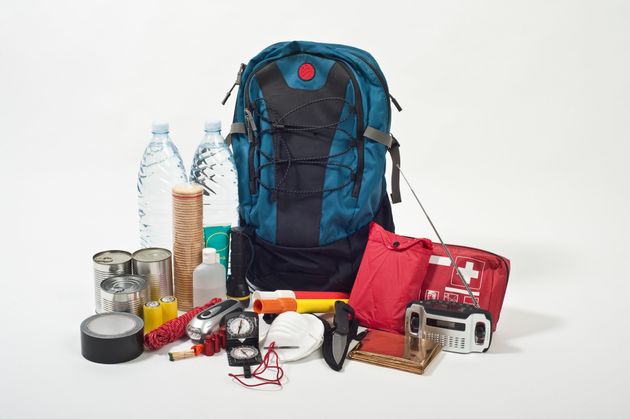
In these uncertain times, it’s not hard to feel as though we’re moments from any number of unprecedented crises.
Whether it’s fears of a climate change-induced disaster, empty supermarket shelves after a no-deal Brexit, or political unrest causing riots in the streets, just five minutes of any given news programme could be enough to make anyone fear the worst.
It’s little wonder, then, that so many leapt to the worst-case conclusion when a number of police forces, local authorities and organisations took to Twitter on Sunday to advise the public to keep a ‘grab bag’ to hand.
Police Scotland tweeted a diagram of said ‘grab bag’, which listed a number of items that could prove rather handy in an emergency evacuation situation, including a torch, seasonal clothing, first aid kit and an ‘emergency plan’ – the details of which remained vague.
All this, along with a number of messages from other organisations, led some just trying to enjoy their Sunday morning browse to frantically pose the question: ‘What do they know that we don’t?’
The tweets sparked a significant backlash on social media, with many equating the messages to ‘scaremongering’ and likening the tweets to advice followed by the ‘survivalist’ movement.
So, is an inevitable (secret) disaster on its way to the UK?
Well, as far as we know, the current answer is ‘no’ – but the point is it’s important to be as prepared as possible at all times.
In countries vulnerable to natural disasters such as earthquakes or hurricanes, the grab bag – known by an array of other names including a Go Bag or a Bug-Out Bag (BOB) – is nothing new, with campaigns targeted towards communities living in high-risk areas urging them to ensure they’re prepared to leave at a moment’s notice.
Aside from a thunderstorm alert in the South West Monday afternoon, there’s no sign of any extreme weather in the UK in the near future. So why did so many groups and public bodies put out advice at exactly the same time?
It all comes down to the #30days30waysUK campaign which runs throughout September, officially named Preparedness Month, which gives followers a new idea each day to help them prepare for the possibility of a major incident.
The campaign was launched in the US in 2010 and has been running in the UK since 2015 when it was first piloted by Northamptonshire County Council’s emergency planning team, with an increasing number of organisations enrolling each year.
In a media statement put out at the end of August – just before the start of this year’s Preparedness Month – Thames Valley Police said they were supporting the campaign, with deputy chief constable Jason Hogg, chair of the Thames Valley Local Resilience Forum, stating: “Despite comprehensive prevention efforts on the part of the emergency services and public sector organisations, emergencies do still occur and can have a significant impact on the lives of those involved…. 30 Days 30 Ways encourages people from all walks of life to take small steps to become better personally prepared to deal with many types of hazards which they may encounter.”
What should you actually put in your grab bag?
According to Staffordshire Prepared, one of the agencies that posted to social media on Sunday, a good grab bag should include the following:
- A copy of a household emergency plan, which includes a list of useful phone numbers for people such as your doctor and close relatives.
- Keys for your house and car
- Mobile phone and chargers
- Wallet/purse, cash and bank cards
- Glasses/contact lenses
- Personal documents such as a passport and a driving license, stored in a waterproof plastic bag
- Medication and copies of prescriptions
- Childcare essentials such as nappies and food
- Spare money
Of course, as the swift appearance of the hashtag #GrabBag revealed, no two emergency supply stashes are the same – with some taking the advice more seriously than others: